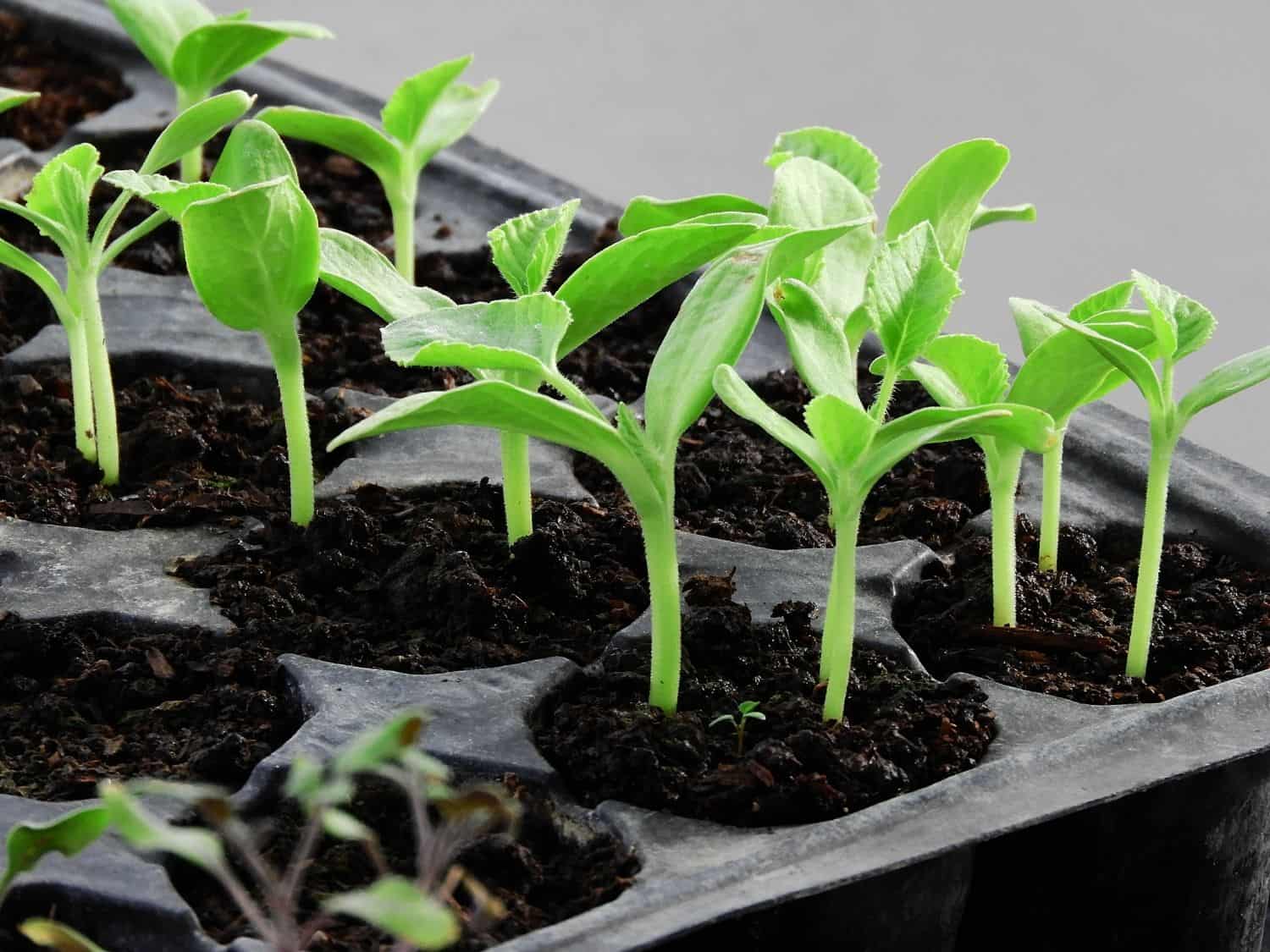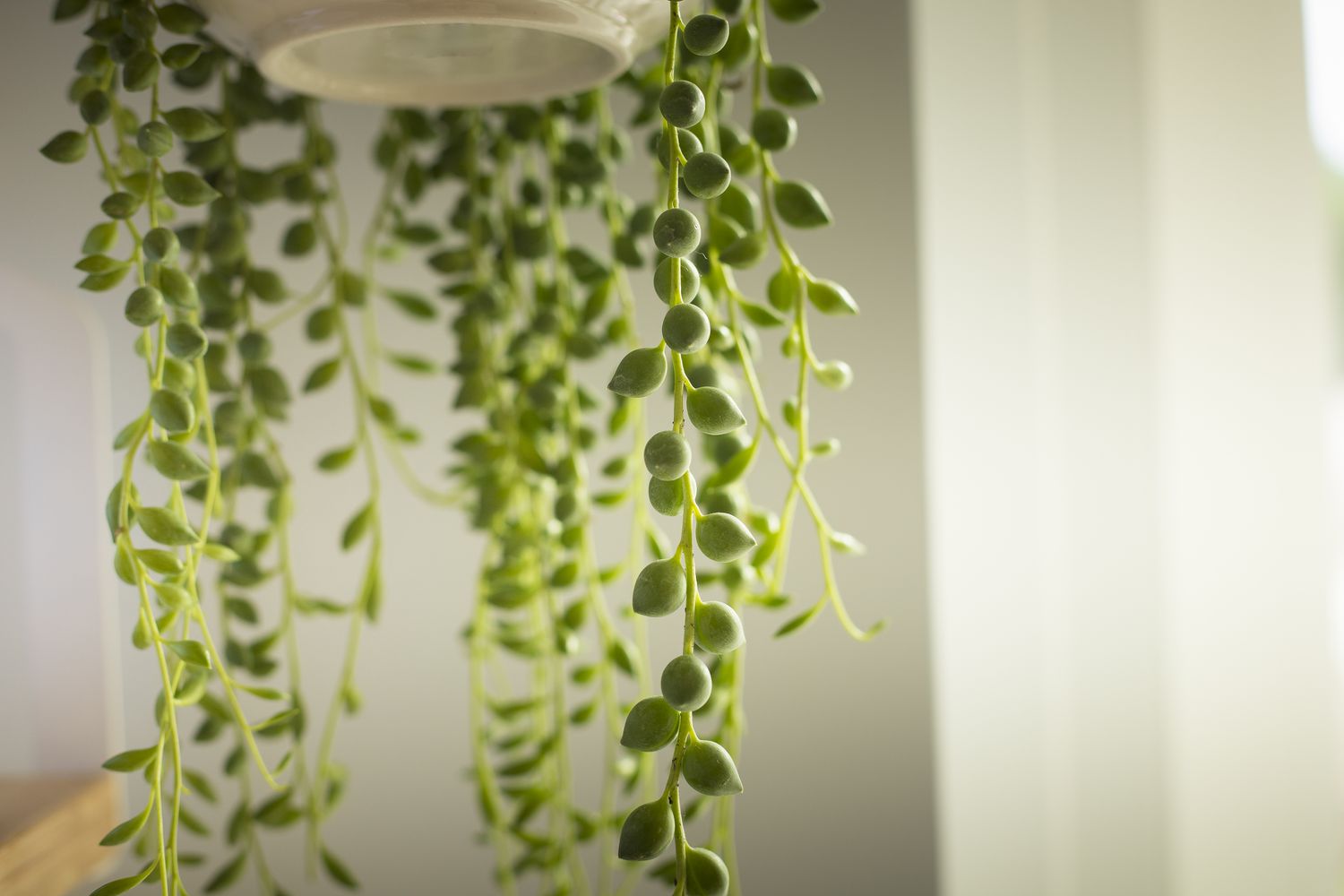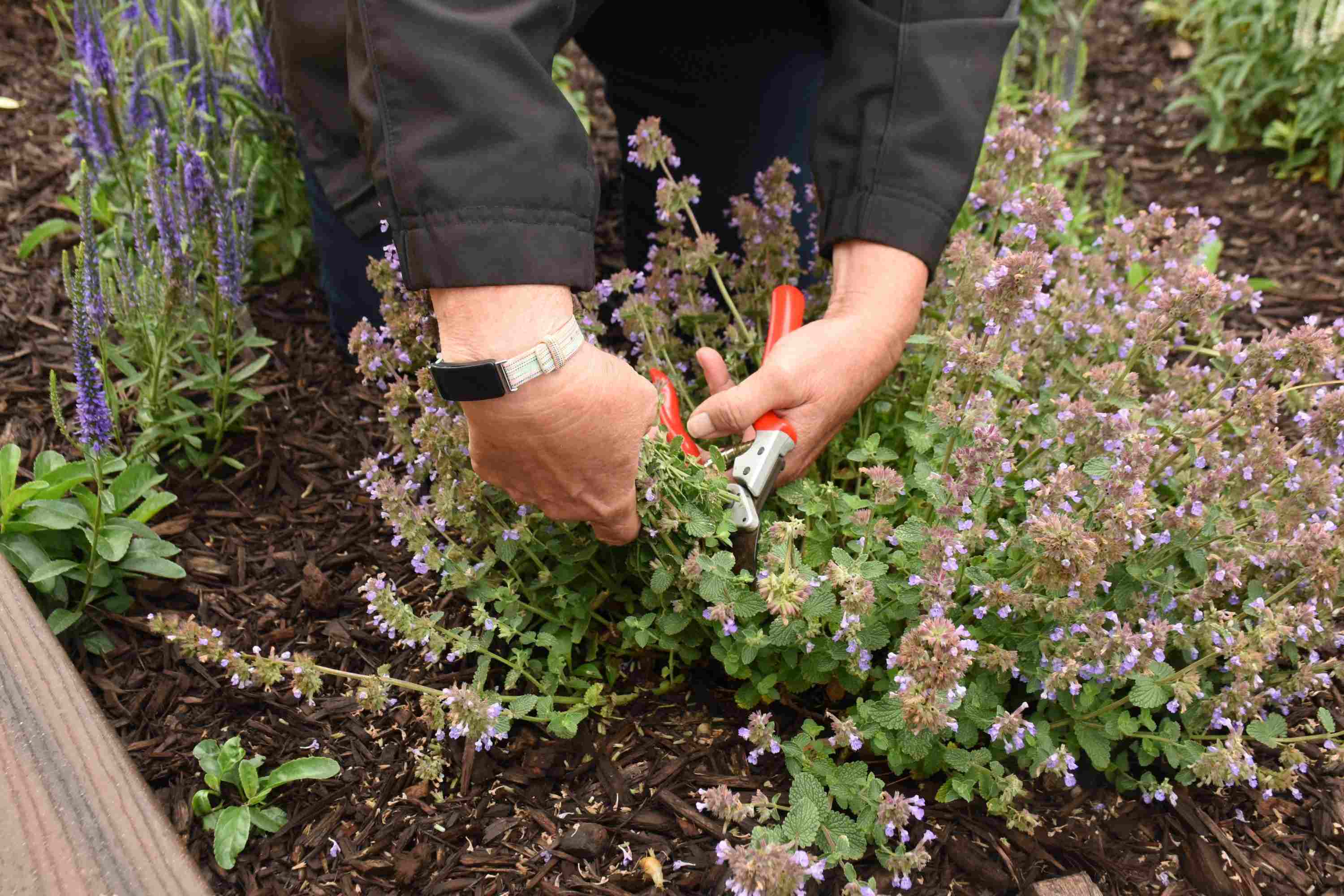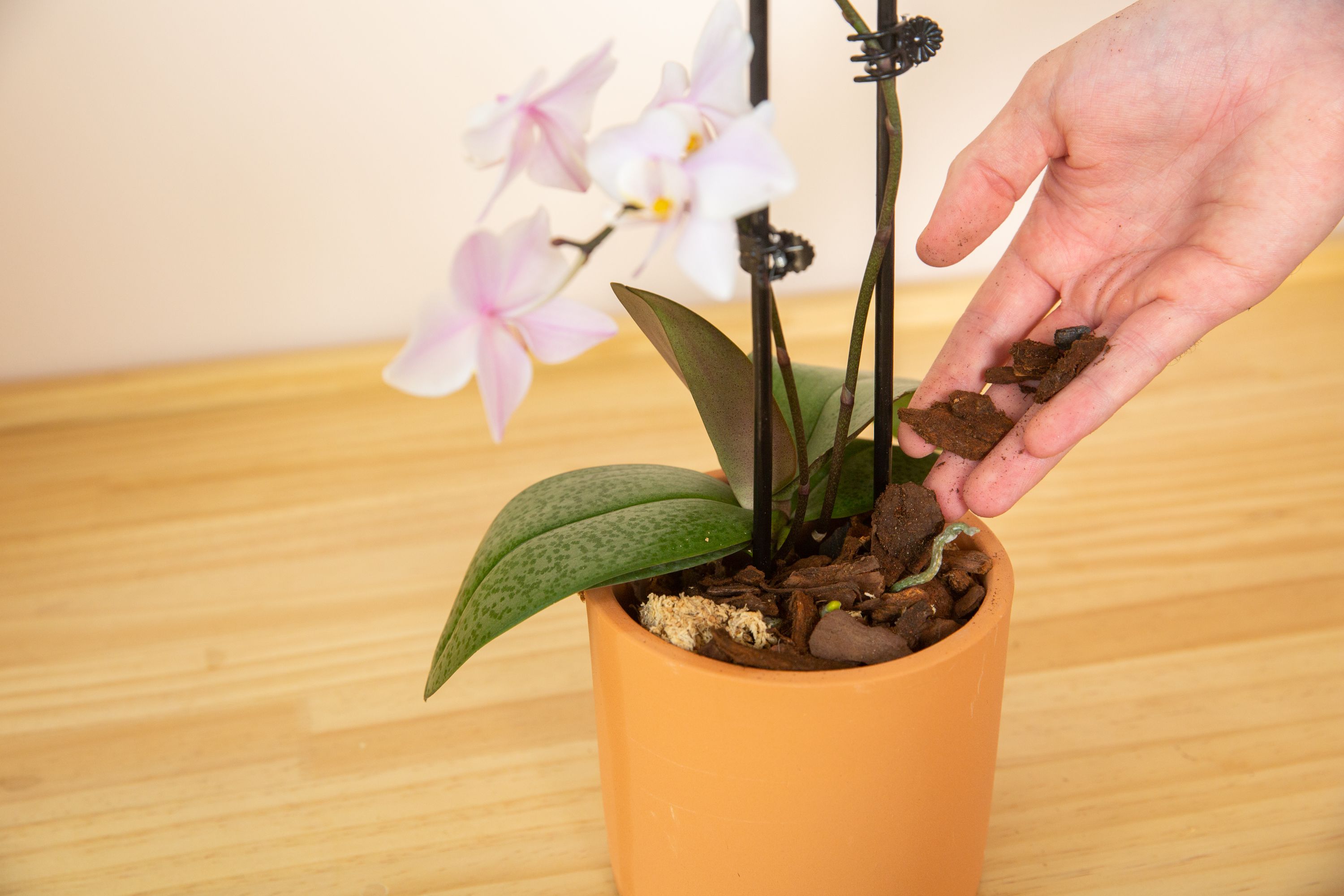Home>Gardening Techniques>Plant Care>How To Care For Dwarf Sunflowers
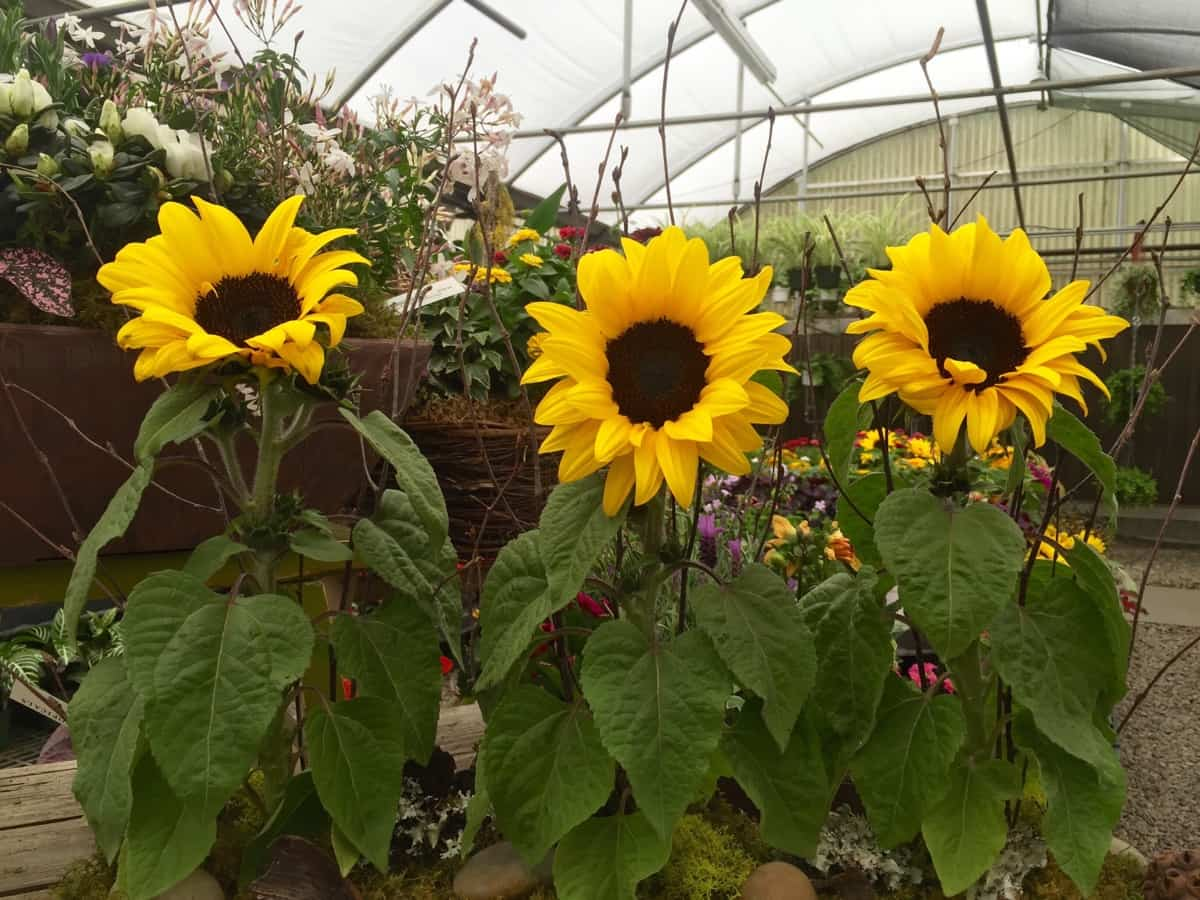

Plant Care
How To Care For Dwarf Sunflowers
Modified: January 22, 2024
Learn how to properly care for dwarf sunflowers with our step-by-step guide. Discover essential plant care tips to ensure healthy growth and vibrant blooms.
(Many of the links in this article redirect to a specific reviewed product. Your purchase of these products through affiliate links helps to generate commission for Chicagolandgardening.com, at no extra cost. Learn more)
Table of Contents
Introduction
Welcome to the world of vibrant and delightful dwarf sunflowers! These charming plants are a popular choice for garden enthusiasts and plant lovers alike. With their cheerful blooms and compact size, dwarf sunflowers add a cheerful touch to any garden or outdoor space.
Whether you are a seasoned gardener or just starting your gardening journey, learning how to care for dwarf sunflowers is key to enjoying their beauty and maximizing their growth. In this article, we will delve into the essential tips and techniques that will help you nurture your dwarf sunflowers and ensure their health and vitality throughout their growth cycle.
Dwarf sunflowers, scientifically known as Helianthus annuus, are miniature versions of their taller flower counterparts. They typically reach a height of 2-3 feet, making them a perfect choice for small gardens, patios, and even container gardening. Despite their shorter stature, dwarf sunflowers still produce stunning blooms in various shades of yellow, orange, and even red.
Aside from their aesthetic appeal, dwarf sunflowers are also relatively easy to care for. With a few basic guidelines, you can create an optimal growing environment and enjoy these cheerful flowers throughout the summer months.
Before we dive into the specifics of caring for dwarf sunflowers, it’s important to note that they are an annual plant, which means they complete their life cycle within one growing season. However, with proper care and attention, you can prolong their bloom time and enhance their overall health.
In the following sections, we will explore various aspects of dwarf sunflower care, such as choosing the right location, planting techniques, watering and fertilizing, providing proper sunlight, supporting and staking, controlling pests and diseases, deadheading and pruning, harvesting and saving seeds, and winter care. By the end of this article, you will be equipped with the knowledge and skills to nurture your dwarf sunflowers and enjoy their radiant blooms.
Choosing the Right Location
When it comes to growing dwarf sunflowers, choosing the right location is crucial for their overall health and development. These sun-loving plants thrive in bright sunlight, so it’s essential to select a spot that receives at least six hours of direct sunlight each day.
Before deciding on a location, consider the available space and the specific needs of your dwarf sunflowers. They require well-draining soil, so choose an area that doesn’t retain water. Avoid planting them in low-lying or compacted soil, as this can lead to waterlogged roots and stunt the growth of the plants.
In addition to sunlight and soil quality, consider the potential wind exposure in your chosen location. Dwarf sunflowers may need support if they are exposed to strong winds, as their compact size makes them more susceptible to damage. Planting them near a fence, wall, or in a sheltered spot can provide some protection from strong gusts.
Moreover, it’s important to consider the surrounding plants and vegetation in your chosen location. Ensure that your dwarf sunflowers have ample space to grow without being overshadowed or crowded by taller plants. This will allow them to receive sufficient sunlight and air circulation, preventing the risk of disease and promoting healthy growth.
If you plan on growing dwarf sunflowers in containers, make sure to choose pots that are large enough to accommodate their root system. Select pots with drainage holes to prevent waterlogging and use a well-draining potting mix. Place the containers in an area that receives plenty of sunlight throughout the day.
By considering these factors and selecting the right location, you can provide your dwarf sunflowers with the optimal growing conditions they need to thrive. This will lay a solid foundation for their overall health and ensure abundant blooms throughout their growing season.
Planting Dwarf Sunflowers
Planting dwarf sunflowers is an exciting step in the journey of growing these beautiful flowers. Before you start, it’s important to ensure that the soil is prepared and the timing is right.
The ideal time to plant dwarf sunflowers is after the last frost date in your area, typically in the spring. This ensures that the plants won’t be exposed to any cold temperatures that can hamper their growth. Make sure the soil has warmed up sufficiently, as dwarf sunflower seeds require warmth to germinate successfully.
Begin by preparing the soil. Remove any weeds or debris and loosen the soil to a depth of about 6-8 inches. Dwarf sunflowers prefer well-draining soil, so if your soil is heavy or clay-like, consider amending it with organic matter such as compost or well-rotted manure to improve drainage.
Next, it’s time to sow the seeds. Dwarf sunflower seeds are relatively large and easy to handle. Create small holes in the soil, about 1 inch deep and 6-12 inches apart, depending on the specific variety you are planting. Place a seed in each hole and cover it with soil. Lightly tamp down the soil to ensure good seed-to-soil contact.
Water the newly planted seeds gently, keeping the soil consistently moist but not waterlogged. It’s important to note that overwatering can cause the seeds to rot, so be mindful of the moisture levels. As the seedlings emerge and grow, gradually increase the amount of water provided.
While dwarf sunflowers are generally resilient, it’s a good practice to protect the newly planted seeds from birds and other pests. You can cover the area with a thin layer of netting or use plastic containers with the bottoms cut out to create mini greenhouses until the seedlings have established themselves.
Once the seedlings reach a height of 3-4 inches, thin them out if necessary. This helps provide adequate spacing for the remaining plants, ensuring they have room to grow and receive sufficient nutrients and sunlight. The specific spacing requirements will depend on the variety you are growing, so refer to the seed packet or plant label for guidance.
By following these planting guidelines, you can set the stage for healthy and vibrant dwarf sunflowers to grace your garden or outdoor space. With proper care and nurturing, you will soon see the rewarding sight of these delightful flowers reaching for the sun.
Watering and Fertilizing
Watering and fertilizing are crucial aspects of caring for dwarf sunflowers, as they directly impact the plants’ growth and overall health. Proper watering practices ensure that the plants receive adequate moisture, while fertilizing provides essential nutrients for their development.
When it comes to watering dwarf sunflowers, it’s important to strike a balance. They require regular watering to keep the soil evenly moist, especially during hot and dry periods. However, overwatering can lead to root rot and other problems. As a general rule of thumb, aim for about 1 inch of water per week, either from rainfall or irrigation.
Monitor the moisture levels in the soil regularly by inserting your finger about 1 inch into the soil. If it feels dry at that depth, it’s time to water. Apply water at the base of the plants, avoiding getting the leaves wet to prevent fungal diseases. Watering in the morning allows the foliage to dry before evening, reducing the risk of diseases as well.
Along with proper watering, fertilizing dwarf sunflowers enhances their growth and blooming potential. Before planting, incorporate a balanced slow-release fertilizer into the soil. This provides a steady supply of nutrients over time. Alternatively, you can use a liquid fertilizer diluted according to the package instructions and apply it every few weeks during the growing season.
Pay attention to the nutrient needs of your dwarf sunflowers. They benefit from a fertilizer high in phosphorus, which promotes healthy root development and abundant blooming. Look for a fertilizer with an N-P-K ratio of 5-10-5 or 10-20-10.
When applying fertilizer, follow the instructions on the package carefully. Avoid over-fertilizing, as this can lead to excessive foliage growth at the expense of flowers. Too much nitrogen can also make the plants more susceptible to diseases.
Additionally, consider using organic fertilizers, such as compost or well-rotted manure, which provide a slow release of nutrients and improve soil health. Mulching around the base of the plants with organic matter can also help conserve moisture and add nutrients to the soil as it breaks down.
By ensuring proper watering and fertilizing practices, you provide your dwarf sunflowers with the necessary resources for healthy growth and vibrant blooms. Remember to monitor the soil moisture and adjust your watering schedule accordingly, while fertilizing at the right times and with the appropriate nutrients.
Providing Proper Sunlight
Sunlight is a vital requirement for the healthy growth and development of dwarf sunflowers. These sun-worshiping plants thrive in full sun conditions, which is defined as at least six hours of direct sunlight per day. Providing proper sunlight is essential to ensure strong stems, abundant blooms, and overall plant vigor.
When selecting a location for your dwarf sunflowers, choose an area with maximum sun exposure. Avoid planting them in shaded or partially shaded spots, as this can result in leggy growth, weak stems, and reduced flowering. Sunlight provides the necessary energy for photosynthesis, the process that enables plants to convert sunlight into food and fuel their growth.
It’s important to note that sunlight intensity can vary throughout the day, especially during the peak summer months. Morning sun is typically gentler and less intense, making it an ideal time for your dwarf sunflowers to soak in the early rays. However, they still require several hours of direct sunlight to thrive.
Monitor the sun patterns in your garden or outdoor space throughout the day. Observe any shaded areas that may be cast by nearby trees, buildings, or other structures. If your chosen location receives partial shade during certain times of the day, consider selecting a different spot or trimming back any obstructions to allow for more sunlight exposure.
In addition to considering the duration and intensity of sunlight, also keep in mind the potential challenges of extreme heat and sunburn. In hot climates or during heatwaves, dwarf sunflowers may benefit from some shade during the hottest part of the day. Providing a temporary shade cloth or planting taller companion plants to provide some relief can prevent heat stress and sunburn.
Furthermore, regularly rotate the pots or containers containing dwarf sunflowers to ensure all sides of the plants receive equal sunlight. This prevents the plants from leaning or bending towards the sunlight and promotes even growth.
By providing the proper amount of sunlight, you create an optimal environment for your dwarf sunflowers to thrive. Their stems will grow strong and sturdy, their leaves will be lush and healthy, and their blooms will be vibrant and abundant. Enjoy the beauty of these sun-loving flowers as they bask in the warmth and brilliance of the sun.
Supporting and Staking
Supporting and staking your dwarf sunflowers is crucial for maintaining their upright growth and preventing the risk of bending or breaking stems. While dwarf varieties are generally more compact and sturdy than their taller counterparts, they may still benefit from a little extra support, especially when faced with strong winds or heavy blooms.
The ideal time to provide support for dwarf sunflowers is when they are still young and growing. As soon as the plants reach a height of 6-12 inches, it’s a good idea to start securing them to prevent any potential damage later on.
One of the simplest and most effective ways to support dwarf sunflowers is by using stakes or bamboo poles. Push the stakes into the ground at a distance around the plants, ensuring they are stable and secure. Gently tie the stems to the stakes using soft string or plant ties, being careful not to tie them too tightly to allow for growth and movement.
Alternatively, you can use a plant support ring or cage to encircle the dwarf sunflowers. These will provide a wider base of support and help keep the plants upright as they grow. Make sure to position the rings or cages around the plants early to avoid damaging the stems.
Another method is to create a trellis or grid using stakes and horizontal strings or wires. This type of support is especially useful for taller dwarf sunflower varieties or areas with strong winds. The horizontal strings act as support for the plants, preventing them from swaying or bending excessively.
When staking your dwarf sunflowers, it’s important to secure them without causing harm to the stems or restricting their growth. Avoid using materials that may cut into the stems or constrict their natural movement. Regularly check and adjust the stakes or supports as the plants grow, ensuring they are adequately supported throughout the season.
In addition to providing support for individual plants, consider the overall placement of your dwarf sunflowers in your garden or outdoor space. Grouping them together can create a natural support system, allowing the plants to lean on each other for added stability.
By supporting and staking your dwarf sunflowers, you protect them from potential damage caused by strong winds, heavy blooms, or their own weight. This proactive measure ensures that your plants remain upright, healthy, and visually appealing throughout the growing season.
Controlling Pests and Diseases
Keeping your dwarf sunflowers free from pests and diseases is essential for their overall health and longevity. While they are relatively hardy plants, there are some common pests and diseases that may pose a threat. By staying vigilant and taking necessary preventive measures, you can protect your sunflowers and ensure their continued beauty.
One of the most common pests that affect sunflowers is aphids. These small insects can cluster on the leaves and stems, sucking the sap and causing damage. Regularly inspect your sunflowers for any signs of aphids. If you notice them, you can physically remove them by spraying a strong jet of water or by using insecticidal soap or neem oil. Ladybugs and lacewings are natural predators of aphids, so attracting them to your garden can help control the population naturally.
Another pest that may target dwarf sunflowers is the sunflower beetle. These beetles feed on the flowers and foliage, causing holes and damage. Handpicking the beetles is an effective method of control. Alternatively, you can use insecticides labeled for sunflower beetles, following the instructions carefully.
Fungal diseases, such as powdery mildew and rust, can also affect dwarf sunflowers, particularly during periods of high humidity or overcrowding. To prevent these diseases, provide adequate spacing between plants to promote air circulation. Avoid overhead watering, as wet foliage can facilitate the growth of fungal spores. If your sunflowers do become infected, remove any affected leaves or flowers promptly and consider using a fungicide labeled for the specific disease.
Other pests that may occasionally affect dwarf sunflowers include slugs and snails. These slimy creatures can cause damage to the leaves and stems. Removing any hiding spots, such as decaying plant matter or boards, can help reduce their populations. Consider using natural deterrents like crushed eggshells or diatomaceous earth around the base of the plants.
Prevention is key when it comes to pest and disease control. Maintaining overall plant health is the first line of defense. Ensure your sunflowers receive adequate sunlight, proper watering, and sufficient nutrients. Healthy plants are better equipped to resist and recover from attacks.
Regularly inspect your sunflowers for any signs of pests or diseases. Early detection and intervention can prevent widespread infestations or infections. Keeping your garden clean by removing debris, spent flowers, and weeds can also help reduce the likelihood of pests and diseases taking hold.
By practicing proper pest and disease control measures, you can protect your dwarf sunflowers and enjoy their vibrant blooms throughout the growing season.
Deadheading and Pruning
Deadheading and pruning are essential techniques to help maintain the health and appearance of your dwarf sunflowers. These practices encourage continuous blooming, prevent self-seeding, and promote a tidy and compact growth habit.
Deadheading refers to the removal of spent flowers or blooms that have faded or wilted. By removing these spent flowers, you prevent the plant from directing energy towards seed production. Instead, it can focus its resources on producing new blooms. Deadheading also keeps the plant looking neat and clean.
To deadhead your dwarf sunflowers, simply follow the stem down to where it meets the main plant. Use sharp pruning shears or scissors to make a clean cut just above a set of healthy leaves or a leaf node. This encourages new growth from that node or leaf, resulting in more flowers.
It’s important to deadhead your dwarf sunflowers regularly throughout the blooming season. Aim to remove the spent flowers as soon as they start to fade or wilt. This encourages the plant to produce more buds and extends the blooming period.
In addition to deadheading, strategic pruning can help shape and control the growth of your dwarf sunflowers. Pruning can be done in early to mid-summer when the plants have reached a significant height. It involves selectively removing select branches or stems to promote a more compact and bushy form.
When pruning your dwarf sunflowers, focus on removing any weak or damaged branches, as well as those that are overcrowding the plant. Make clean cuts just above a set of healthy leaves or a leaf node to encourage new growth from that point. Avoid excessive pruning, as it can stunt the growth or delay flowering.
Regular deadheading and selective pruning help your dwarf sunflowers maintain a well-groomed appearance and encourage a continuous display of beautiful blooms. These practices also prevent self-seeding, which can lead to overcrowding and competition for resources among the plants.
Remember to sanitize your tools between cuts, especially if you have previously pruned any diseased plants. This helps prevent the spread of diseases.
By incorporating deadheading and pruning into your care routine, you can help your dwarf sunflowers thrive and enjoy a long-lasting and vibrant display of flowers throughout the growing season.
Harvesting and Saving Seeds
Harvesting and saving seeds from your dwarf sunflowers is not only a rewarding experience but also a cost-effective way to grow new plants in the future. By collecting and storing seeds, you can continue to enjoy the beauty of your favorite dwarf sunflower varieties year after year.
Harvesting seeds from dwarf sunflowers requires patience and timing. The seeds should be fully mature and dry on the plant before harvesting. Wait until the flower heads have turned brown or yellow and the petals have fallen off. The back of the flower head will turn brown, and the seeds will become plump and develop a dark color. This indicates that they are ready for harvest.
To harvest the seeds, cut the flower heads from the plant using sharp pruning shears or scissors. Leave a stem of about 4-6 inches attached to the flower head. This will make handling and drying the seeds easier.
Next, remove any remaining petals and bracts from the flower head. Shake or rub the flower head gently to release the seeds. You can also use your fingers or a fork to separate the seeds from the flower head, being careful not to damage them.
Once the seeds are removed from the flower head, spread them out in a single layer on a clean and dry surface, such as a tray or paper towel. Allow the seeds to air dry in a warm and well-ventilated area for about 1-2 weeks. The seeds should be completely dry before storing them.
Once the seeds are dry, store them in a cool and dry place in airtight containers, such as glass jars or seed envelopes. It’s important to label the containers with the variety, date, and any other relevant information. This will help you keep track of your seed collection and ensure that the seeds remain viable for future planting.
Remember that cross-pollination can occur between different sunflower varieties, resulting in hybrid seeds. If you want to maintain the characteristics of a specific variety, it’s important to isolate the plants and only collect seeds from one variety at a time.
Properly harvested and stored sunflower seeds can remain viable for several years. However, it’s always a good practice to perform a germination test before planting the stored seeds to ensure their viability.
By harvesting and saving seeds from your dwarf sunflowers, you can continue to grow and enjoy these beautiful flowers in your garden for years to come. It’s a wonderful way to preserve and share your favorite sunflower varieties with others.
Winter Care for Dwarf Sunflowers
While dwarf sunflowers are annual plants, meaning they complete their lifecycle within one growing season, there are still important steps to take for their winter care. Proper winter care ensures that your sunflowers have the best chance of regrowth and success in the following season.
As the first frost approaches, it’s important to prepare your dwarf sunflowers for winter. Before the frost hits, remove any remaining flowers, seed heads, and foliage from the plants. Doing so helps prevent the spread of diseases and minimizes potential hiding places for pests.
Once the plants have been cleared, you have two options for winter care: leave the plant material in place or remove it entirely.
If you choose to leave the plant material in place, it can provide some protection for the soil and roots, as well as serve as a habitat for overwintering beneficial insects. However, it’s important to monitor the plants for any signs of disease or pests and address them promptly to prevent overwintering populations from causing problems in the next growing season.
If you decide to remove the plant material, cut the stems down to about 6 inches above the ground. This reduces the risk of disease and makes it easier to prepare the soil for the next growing season. Dispose of the plant material in a compost pile or discard it away from your garden area to prevent the spread of any potential pathogens.
After clearing the plant material, it’s time to prepare the soil for winter. If you didn’t do so earlier, add a layer of organic mulch, such as straw or shredded leaves, to help insulate the soil and protect it from extreme temperatures. Mulching also helps to suppress weed growth and retain moisture in the soil.
It’s a good idea to mark the area where your dwarf sunflowers were planted. This will help you remember their location in the spring and avoid accidentally disturbing any emerging seedlings.
During the winter months, it’s crucial to keep an eye on the soil moisture levels. While you don’t want the soil to become waterlogged, it’s important to ensure that it doesn’t completely dry out. If there is a prolonged period of dry weather, water the soil lightly to keep it slightly moist.
In areas with harsh winter conditions or freezing temperatures, protecting the soil with a layer of mulch can also help prevent frost heave, which can dislodge the plants’ roots and cause damage.
When spring arrives, remove the mulch and prepare the soil for planting your new crops. If any dwarf sunflower seedlings emerge from the previous season’s seeds, thin them out to provide adequate spacing for healthy growth.
By following these winter care guidelines, you provide your dwarf sunflowers with the best possible chance of regrowth and success in the following season. With proper preparation and attention, you can enjoy the beauty of these delightful flowers year after year.
Conclusion
Caring for dwarf sunflowers can be a truly rewarding experience, allowing you to enjoy the beauty of these vibrant flowers throughout the growing season. By following the guidelines provided in this article, you can ensure the health and vitality of your dwarf sunflowers and create an optimal growing environment.
From choosing the right location and planting the seeds to providing proper sunlight, watering, and fertilizing, each step of the care process contributes to the overall success of your sunflowers. Supporting and staking the plants helps maintain their upright growth, while controlling pests and diseases prevents damage and promotes a thriving garden.
Deadheading and pruning are essential practices to encourage continuous blooming and maintain a neat appearance. Harvesting and saving seeds not only allows you to preserve your favorite varieties but also offers the opportunity to share them with others.
Finally, providing proper winter care ensures the best chance of regrowth and success in the following season. By taking these steps, you can experience the joy and beauty of dwarf sunflowers year after year.
Remember to infuse your care routine with creativity and a human-like touch, considering the unique needs and preferences of your sunflowers. Observe and respond to their growth and health, and adjust your care practices as needed.
With your newfound knowledge on caring for dwarf sunflowers, you are well-equipped to embark on a journey of nurturing these delightful plants. Whether you’re a seasoned gardener or a beginner, the joy and satisfaction of watching your sunflowers thrive and bloom is truly unmatched.
So, roll up your sleeves, grab your gardening tools, and immerse yourself in the world of dwarf sunflowers. Enjoy the process, witness the beauty, and create a flourishing haven for these charming blooms in your garden or outdoor space.



